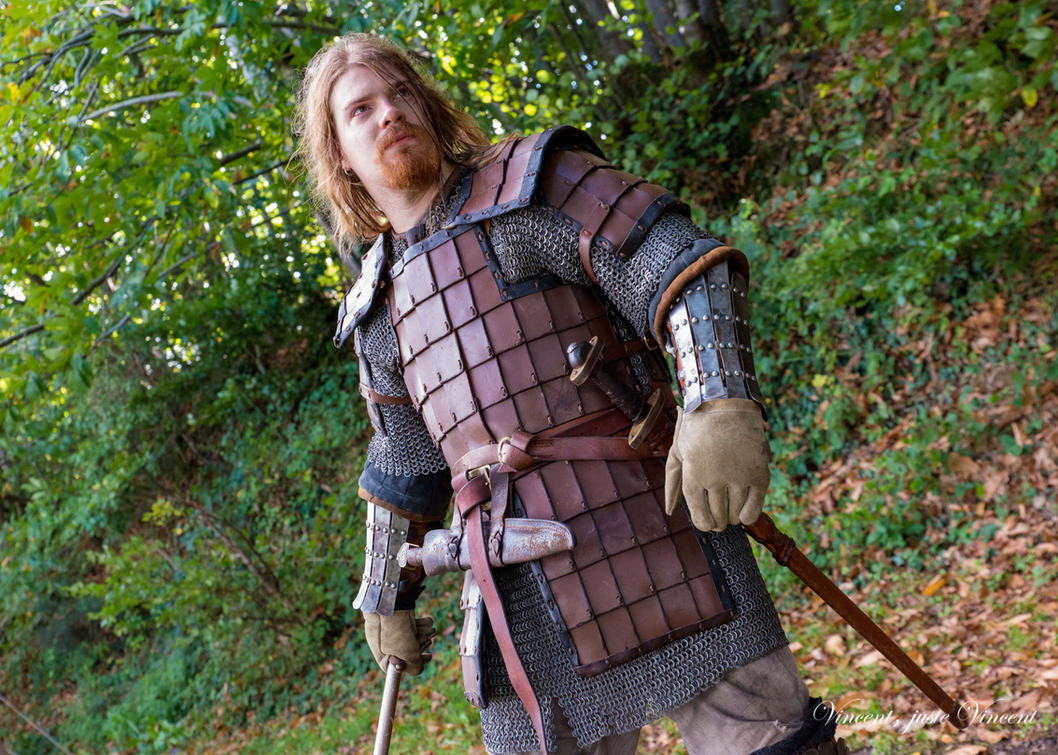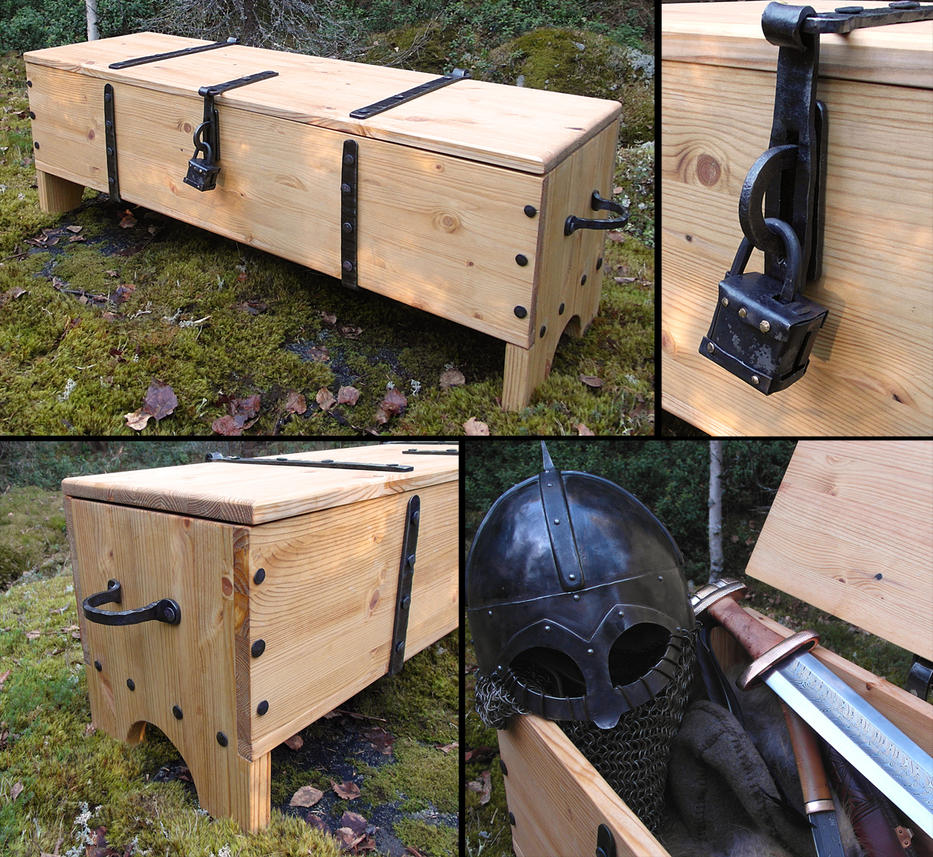
Guess: about which element from the picture above will be this article about?
About socks. And to be more precise -- about one really old technique of making them, older than crocheting and much older than knitting. Previously, you could read a simple tutorial about how to make a viking dress, and this little thing is strongly connected to the mentioned one. I'd not imagine a lack of these socks when some of the history reenactment events are early in April or in October, or exactly in winter. (Of course, the ones from the photo above are my summer socks, phew. You'll see my winter ones in the end.)
Besides being accurate historically and useful for history reenactment, I'm sure that you can admit how waaarm and comfortable can woolen socks be. There's nothing better to warm up your toes after you arrive home in December, all cold and tired... maybe except a nice bath, but noone says that you can't wear socks afterwards.
Naalbinding, or Naalebinding, or Nålebinding, is a technique very similiar to crocheting; it remids also of weaving fishing nets. You can say that Naalbinding is a precursor of crocheting. The two main diffrences between these two techniques are the timelines when they were the most popular - Naalbinding was the most popular until knitting and crocheting came in the late Medieval Ages; the other huge diffrence is that unlike in crocheting, you can't undo what you've already done so easily.
Nowadays, Naalbiding is mostly used in Scandinavia, where its name comes from. It's also a good time to write about it, when you can find it the most useful, isn't it? (:
What do we need?
Quite a simple thing. We need a yarn, a needle and scissors. And time. Consider the yarn: for my viking reenactment, I used woolen ones, but you must remember that wool has its own rights to shrink when washed. So if you don't need it to be uber-true, just take some acrylic yarn, it's good as well.
Needle. A big one. And blunt. That would be all. My needle is made of bone, I bought it from
UEdkaFShopie's sister a couple of years ago. It's 9 cm long and 7mm wide in its widest part. There are also wooden, plastic and metal needles, and you can even made one on your own, for example from carp's fish-bone (though it may be flimsy).
What do we do?
I'll mention here the simplest and the easiest to understand way, but believe me, there are many others... just not so uncomplicated.
First, cut off at least 1 meter of the yarn. Usually I cut off 1,5 - 2 meters. Unlike in crocheting or knitting, you'll have use cut pieces and tie new ones when the current one ends. Now, make a base loop like in the picture belw. A small one, I made it a bit bigger just for this tutorial, I usually make a half of its size. Leave behind about 2-3 cm, so it wouldn't just slip off.
Time to start making the "true" loops! Take a close look at the picture on the right.
Move your needle through the base loop - can be from below, can be from above, find the way that is more comfortable for you. After you pull some of the thread , you'll notice another loop making. Move needle through it to make a formation like in the photo and pull. Not too tight - otherwise you won't be able to make further rows.
Now, just keep repeating making the same loops until you form a circle. Then you must think and plan your next moves - depending on what do you want to achieve, you'll have to form diffrent shapes: therefore you'll have to add diffrent amount of loops in diffrent places. It's good to check if you're going in the right way, so when you're for example making a sock, just try it on as often as you need (even if you've got less than to cover your toes).
When you finish making the first row of loops, start making the second row. Unlike with the first row, now you'll have to loop the thread around the loops from the first row. Don't make just one new loop on one older loop, unless you want to get a finger part for a glove.
When making a sock, I usually add 2-3 loops for one old loop at the beginning, until I cover the width of my foot. Then I add a couple of extra rows before I start the 1:1 part to cover the metatarsus. When making the heel part, first I make an extra patch by making loops on a 3/5 of the already made pouch, simply by going there and back again. When it covers the heel, I go back to making loops all around.
A cap: it's the easiest thing to make. I'd consider making it before getting to socks. Remember only to add more loops with each row and some 1:1 in the end, so you'd not finish up with a napkin.
Mittens: I start with making a separate part for the thumbs. After I make enough to cover the thumb, I just leave it and make the parts for the whole palm. In accurate moment I attach the thumb and make further loops so on. Mittens are easier than socks, a bit harder than a cap, but not much.
Mittens, winter socks (too big!) and the first socks I've ever made. They were worn so many times that they started felting up.




























